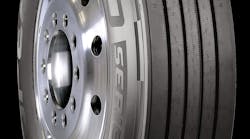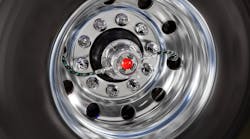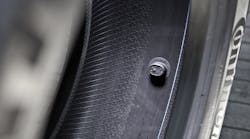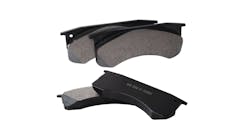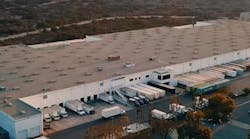When buying a truck, astute fleet managers will make the ‘which truck to buy’ decision based in part on lifecycle costs. They know the upfront cost of the truck and can factor in service and PM costs, expected fuel economy, and residual value. It’s a blueprint for success.
With tires, the thought process should be the same. After all, tires are the second largest operating expense after fuel.
Considerations for assessing tire lifecycle include the initial cost, their effect on fuel consumption, the wear life of the tires, and the residual value. For instance, residual value includes the retreadability of a tire if the fleet is using retreads or the market value of casings if a fleet chooses not to use retreads.
Tire price
Tire price will be a clear-cut factor when considering different tire models. It’s the first factor when determining the cost of ownership over time, or miles.
Miles to removal is a straightforward measure of tire performance that has typically been used to calculate tire operating cost over time, or miles. Simply divide tire cost (minus casing value if a fleet plans to sell it) by the miles to removal to determine a tire cost per mile.
This is an easy calculation for fleets that have already run a given tire model but require testing or assumptions about wear life when considering a new tire model.
Impact on fuel economy
The effect of tires on fuel economy is far less apparent because there are so many factors that can impact fuel economy. But, it is very important to the total cost of ownership, especially in long haul or regional haul operations where the trucks are constantly rolling. A starting point to assessing good fuel economy is to run only SmartWay-verified tires on all positions.
The U.S. EPA SmartWay website suggests that these tires should give a 3 percent improvement on fuel efficiency over non-verified tires. Depending on a fleet’s starting point and which SmartWay tires are selected, it could be significantly more. Cooper’s new PRO Series LHS steer tire, for example, exceeds SmartWay requirements for rolling resistance by about 15 percent.
To put fuel economy and tires into perspective, annual fuel costs for a truck running 100,000 miles per year, averaging 7 mpg with fuel prices at $3 per gallon, would be about $43,000 annually. In this example, every percentage point reduction in fuel consumption would translate to a $430 savings.
Lower rolling resistance, which is designed to decrease the drag of a tire, can help improve fuel efficiency. SmartWay-verified tires are designed to have a lower rolling resistance. As a SmartWay-verified tire, about 30 to 40 percent of the fuel in the calculation above would be needed just to overcome the loaded tire rolling resistance. Presumably, fleets are already running tires that are at or below the SmartWay limit for rolling resistance. Now if a fleet selects tires for all positions – tires that actually have rolling resistance 5 percent below their existing fleet tires, for example – then fuel consumption for the new set of tires would drop by up to 2 percent, providing a total savings of $860 in this example.
If the consideration were only for the drive tires, then the 5 percent improvement in rolling resistance for those drive tires would translate to a little less than 1 percent of total fuel consumption, or about $400 per year.
It is important to note that fleets will not see an immediate improvement in fuel efficiency the day they replace worn tires with new, more efficient tires. The new tires will be at full tread depth while the tires they replaced were worn down. The comparison has to be new-to-new, and the benefit of the more efficient tire will accrue over time.
Maximizing tread wear
When it comes to fuel efficiency, it’s a hard balance for tire manufacturers to maximize tread wear while reducing rolling resistance. Some SmartWay tires have less tread depth than non-SmartWay tires because the shallower the tread depth, the more fuel-efficient the tire. This is especially the case with drive tires. The big difference between SmartWay and non-SmartWay tires is often in the tread compounding which impacts both rolling resistance and tread wear. The key is to find a SmartWay tire that gives fleets adequate tread depth and miles to removal.
Testing one model of tire against another for either tread wear or fuel efficiency requires careful planning and execution in order to generate data that is valid for decision-making. The Technology & Maintenance Council (TMC) provides recommended practices for both.
Wear testing can be a part of normal operations, which makes it relatively easy. It can be conducted to simultaneously test various steer, drive, and trailer tires against one another. The disadvantage of wear testing is that it takes a long time – at least six months to start – to generate useful data. With that comes the likely loss of some tires, so the initial quantity of tires and trucks needs to be large enough to still allow a valid test.
Fuel economy testing, compared to testing for tread wear, has the advantage of being relatively quick so that decisions can be made and implemented. However, it requires very high attention to detail outside of normal operating practices. Because it requires something beyond the normal day-to-day work, it costs more to conduct it.
Each test run can only evaluate one full set of steer, drive, and trailer tires against another set. This means that to evaluate several different models of drive tires, fleets would have to keep all other tires the same while running tests (and run replications of the tests), then repeat the exercise to evaluate steer or trailer tires. Keep in mind there is no reason to assume that just because one brand (and specific model) is better at one position that it’s better than another in a different position.
Assessing tire casings
Finally, the integrity of the tire casing is an important factor. This is the “residual value” of the tire.
Look closely at the tire manufacturer’s warranty. It will tell fleets how much confidence the tire manufacturer has in its tire, including the retreadability of the casing. What the warranty offers projects the quality of the tire and gives fleets assurances that the tire will perform as advertised. A fleet’s retreader should be able to advise on rejection rates for various brands of casings and how well a given brand will hold up to multiple retreads.
Another metric to look at is the casing market value. Simply ask the tire dealer what they’ll pay to buy back virgin casings from the brand being considered.
Putting it together
Without including fuel economy differences, here is a quick calculation to analyze tire cost per mile: (Original price – casing value) / drive tire mileage = cost per mile.
The two examples below show how tire price, casing value, and mileage can impact this calculation.
Tire A
Original price – $400
Casing value – $40
Drive tire mileage – 370,000 miles
Cost per mile – 0.0973 cents/mile
Tire B
Original price – $500
Casing value – $50
Drive tire mileage – 400,000 miles
Cost per mile – 0.1125 cents/mile
Even though Tire B had more miles to removal, it was more expensive to run and not the low cost of ownership winner.
To carry this example further, if a fleet is running 100,000 miles per year, then the annual cost difference is a little over $15 per tire or $120 for eight drive tires. That adds up quickly for a large fleet of trucks.
It is important for fleets to do their homework and take steps to analyze the tire program and factor in cost, miles to removal, fuel economy, and casing integrity. The study will be well worth it.
Phillip Mosier is manager of commercial tire development for Cooper Tire & Rubber. Cooper Tire & Rubber Company specializes in the design, manufacture, marketing, and sales of replacement automobile and truck tires. Mosier is a 20-year tire professional, responsible for the design and development of commercial truck and bus tires for the North and South America regions. Mosier and his team have brought to market many successful commercial truck tires in the Cooper Commercial Series and Roadmaster brand tire lines.
